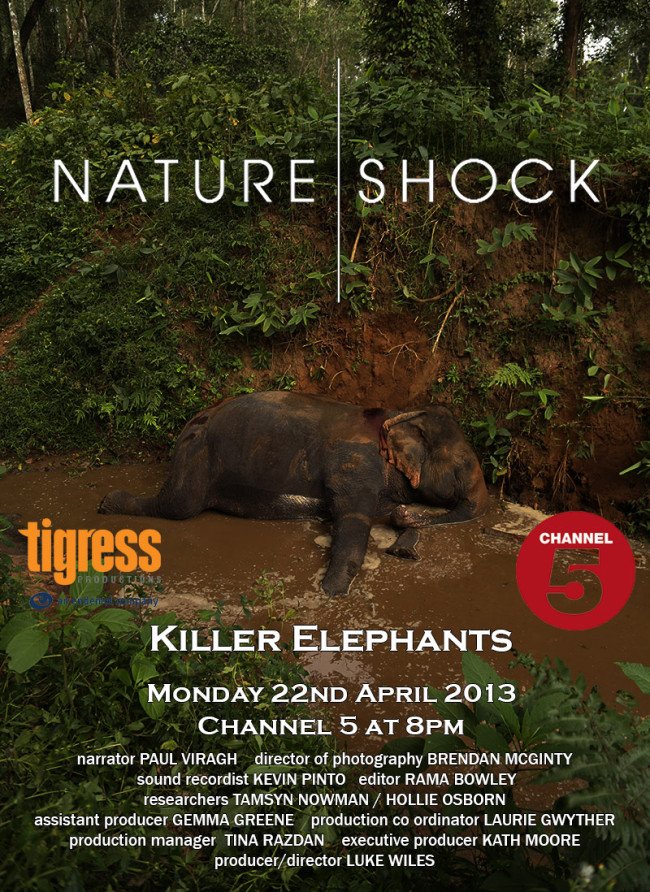In the South Indian state of Kerala during 2009/10 a series of dead elephants are discovered by forest guards – each has died in suspicious circumstances. Finding so many corpses in the popular Periyar Wildlife Sanctuary is a huge shock for those who protect these endangered animals, and for Scientists worldwide.
There are around 900 Asian elephants in this Sanctuary and it’s extremely rare to find them dead. Normally around 3 or 4 die each year, mostly from old age.
Kannan, a tribesman with 30 year’s experience, is one of those tasked to guard the 350 square mile Sanctuary. On March 16th 2009 he’s distressed to discover two elephant corpses on the same day. No one in the Sanctuary has experienced anything like this before. Yet the tally of deaths keeps rising. And just five weeks later the body count stands at seven. All bar one are female and none are old.
Why are so many elephants dying in their prime, and why are nearly all female?
Conservationists are forced to become investigators. With no witnesses and scant evidence, the truth of what’s happening is hard to determine. They must urgently examine a range of threats facing their prized elephants.
One threat echoes fearfully around the Investigators’ minds: poaching. In the last 60 years India’s elephant population has halved, much of it due to poaching. Periyar Sanctuary has suffered from the worst of this, leaving it with a uniquely distorted nature.
As the mystery of the deaths deepens the State Government is forced to send in a team of scientists. They reach a shocking conclusion, proving, ‘without doubt’ they say, that a male elephant has warped from sexual aggressor into serial killer – a deduction that’s not only alarming, but also unprecedented.
However, Dr. Ajay Desai – a biologist with vast experience of elephant behaviour – thinks they may have underestimated this crisis. And when a tribal fisherman witnesses one astounding event Desai gets his proof, revealing both the truth of what is happening in the Sanctuary, and why. It offers a revelation arguably more shocking than the forest guards, the investigators, or the committee of scientists could ever have imagined.
About Dr Kate Evans :
In January 2002 Kate Evans started research on elephants in the Okavango Delta, with the help and support of Randall Moore of Elephant Back Safaris (EBS) and the Ministry of Environment, Wildlife and Tourism. The research is focused on adolescent male elephants and the transition from herd to bull life with an emphasis on research into the viability of releasing elephants into the wild from a captive environment. The charity Elephants For Africa was set up in December 2007 to support the research, a scholarship program for local students and an outreach education program.
More here: http://www.elephantsforafrica.org/index.html
Channel 5 at 8pm on Monday 22nd April 2013
